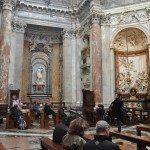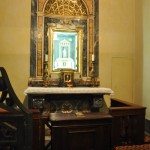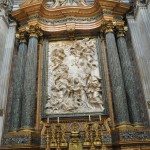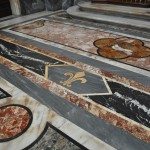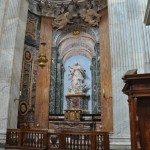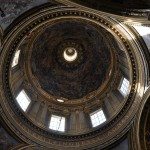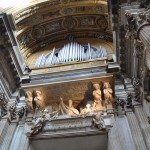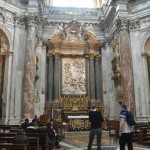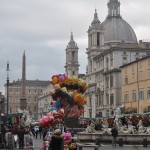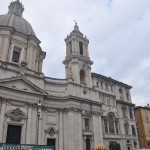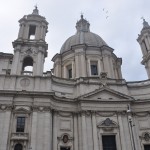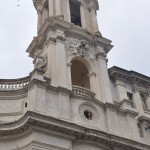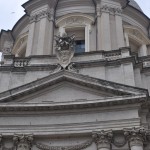Sant Agnese in Agone Church Rome
Sant'Agnese in Agone Church - Piazza Navona, Rome
Sant' Agnese in Agone Church is found opposite to the Piazza Navona fountain. Four
different architects put their hands on it to make it look the way we see the church
today. In 1652, Pope Innocent 10th authorized Girolamo Rainaldi to start a project for
the church. Starting in 1653 the famous architect Borromini designed the façade,
which were adorned with columns and the two bell towers and finally Carlo Rainaldi,
Girolamo Rainaldis son, gave the final touch to it! Later, Bernini was asked to take over and give his magic touch to the church.
-
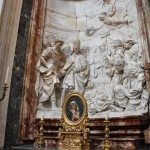
- The interior of the church is attributed to Bernini’s students; it has many wonderful gold bladed statues, gilded stucco, frescoes, and marble altarpieces
The interior of the church is attributed to Bernini’s students; it has many wonderful
gold bladed statues, gilded stucco, frescoes, and marble altarpieces.
The name “in agone” comes from Piazza Navona which was named like this originally
referring to the games it used to hold. The church is built on the spot where Saint
Agnes was killed. The story goes as the following: Agnes was a very young beautiful
13 year old roman girl from a noble family. Even though her parents were pagan, she
had a Greek Christian slave as a nanny. She refused Procop, the Govenors son, who
had tried to win her over with rich gifts and wanted her to marry her. Agnes kept on
saying “Jesus is my only spouse”. He got very angry and accused Agnes of being a
Christian. Those days Christians were prosecuted and he was sentenced to death by
being burnt at the stake but the wood that was supposed to burn her would not ignite,
so a soldier simply cut off her head.
Thanks to the connections they had to Pope Innocent 10th, which was a family
member, the Pamphili family, who lived in the building next door, had an opening
through their building that would have a direct view inside the church, so it was
possible for them to take part in religious services without having to leave their house.
The church was their family chapel!
Opening hours:
Weekdays: 9.30 AM -12.30 PM and 3.30 PM -7 PM. Sunday and holidays: 10.00 AM
-1.00 PM and 4.00 PM – 7.00 PM. Closed on Mondays.
Phone number: +39 06 6819 2134
Address: Via di Santa Maria dell'Anima, 30/A, 00186 Rome, Italy
Mass at Sant’Agnese in Agone Church
If you’d like to attend Mass at the Sant' Agnese in Agone Church, you can do so at
12.15 PM and 7.00 every Sunday and holidays.






